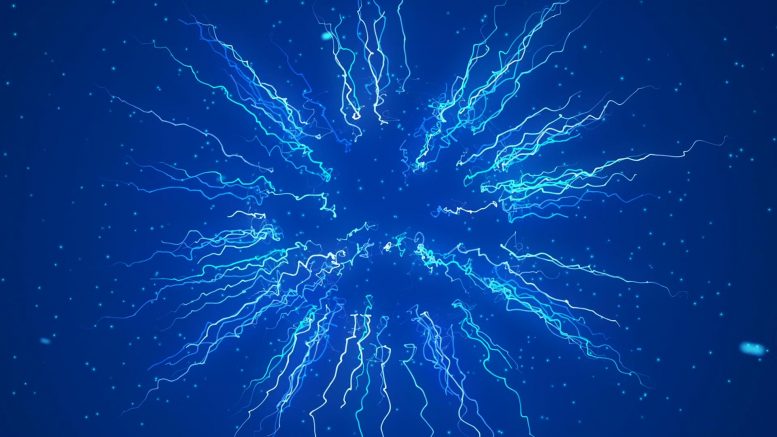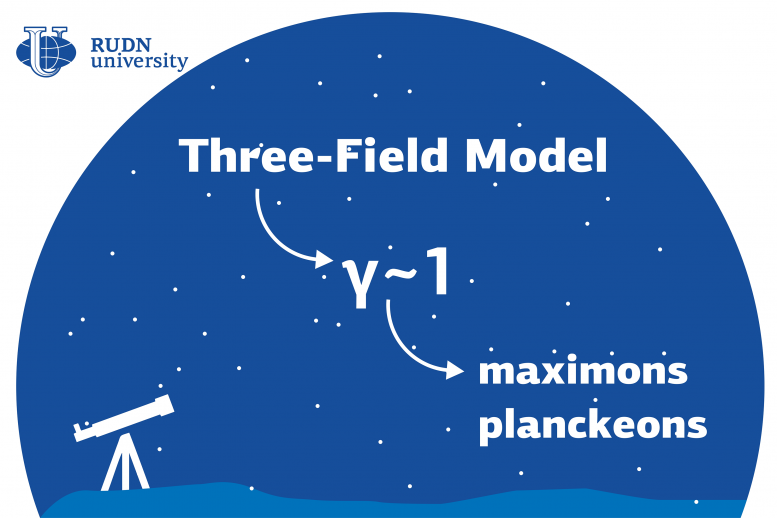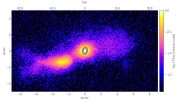
Physicists suggest that gravity may have a more significant role in the formation of elementary particles than previously believed.
Gravity might play a bigger role in the formation of elementary particles than scientists used to believe. A team of physicists from RUDN University obtained some solutions of semi-classical models that describe particle-like waves. They also calculated the ratio between the gravitational interaction of particles and the interaction of their charges. The results of the study were published in the Universe journal.
Due to their small size, the gravitational interaction between elementary particles (electrons, protons, and neutrons) is weak compared to Coulomb forces — attraction and repulsion determined by charge. For example, negatively charged electrons move around the atomic nucleus that contains positively charged protons. Therefore, the ratio of Newtonian attraction to Coulomb repulsion (or γ,) is negligible. However, on the Planck scale, i.e. at distances around 1.6 x 10-35 m, these forces become comparable. A team of physicists from RUDN University found solutions of existing models that correspond to particles in the Planck’s range.

Gravity might play a bigger role in the formation of elementary particles than scientists used to believe. A team of physicists from RUDN University obtained some solutions of semi-classical models that describe particle-like waves. They also calculated the ratio between the gravitational interaction of particles and the interaction of their charges. Credit: RUDN University
“Gravity can potentially play an important role in the microworld, and this assumption is confirmed by certain data. γ is considered a ‘magical’ dimensionless number, and we are unaware of any serious attempts to theoretically obtain such a small value of γ — 10-40. We presented a simple model that allowed for obtaining this particular value in a natural way,” said Vladimir Kassandrov, PhD, and an Assistant Professor of the Institute of Gravitation and Cosmology, RUDN University.
The team used semi-classical models based on electromagnetic field equations. They have several solutions for particles as well as solitons (stable solitary waves). In equations like this, gravity is usually not taken into consideration and is replaced with a nonlinear correction that is chosen almost arbitrarily. This is where the main issue with these models lies. However, it can be solved by adding the equations of three fundamental fields to the system. Then, following the requirements of gauge invariance (that prevent physical values from changing simultaneously with the transformation of the fields), the form of nonlinearity becomes strictly defined. The team from RUDN University used this approach to find solutions that matched the characteristics of typical elementary particles. The existence of such solutions would confirm the fundamental role of gravity in the formation of particles.
The team failed to find solutions in which the charge and mass matched elementary particles at γ<0.9, and the very possibility of their existence remains questionable. However, the scientists managed to obtain solutions to the model for γ~1. They describe charged semi-quantum objects in the Planck range (i.e. with a mass around 10-5 g and size in the order of 10-33 cm). The physicists are still unsure what these solutions correspond to. Hypothetical particles with these parameters are called maximons or planckeons. The team from RUDN University was the first to obtain a discreet energy spectrum for objects with γ tending to infinity (i.e. with electric field excluded from the model). In this case, the solution describes objects with near-solar mass.
“Although our attempt to calculate probability characteristics at γ<0.9 was not successful, the model still could have such particle-like solutions. In the future, we would like to shed light on this problem that is intriguing for physicists by extremely complex from the point of view of mathematics. We want to find out if solutions for elementary particles really exist in the three-field model”, added Vladimir Kassandrov from RUDN University.
Reference: “On a Crucial Role of Gravity in the Formation of Elementary Particles” by Ahmed Alharthy and Vladimir V. Kassandrov, 23 October 2020, Universe.
DOI: 10.3390/universe6110193
Editor’s Note [6/13/21]: Several of the values in this article were updated because they had been missing the negative sign in the exponent.








“a mass around 10^5 g and size in the order of 10^33 cm”
Pretty sure you mean -5 and -33.
Thanks for letting us know! I have updated the article.
This requires gravity to be a fundamental particle itself, refered to as a graviton which has as far as I know, never been proven to actually exist beyond what we call gravitational waves. With our lack of knowledge it is almost easier to assume the opposite, that gravity is simply a byproduct of particles with mass, mass itself would be the fundamental force, not gravity. Prove gravitons are real and and gravity becomes a quantifiable fundamental force.
Row, row, row your boat,
gently, down the stream.
Merrily, Merrily, Merrily, Merrily,
life is but a dream..
What are elementary particles formed of? The definition of an elementary particle is s particle that is not comprised of smaller parts. How can you suggest that elementary particles are formed?
Another units problem.
“… on the Planck scale, i.e. at distances around 1.6 x 10^35 m”
I think this should have been 1.6 x 10^-35 m.
Thanks for your comment. However, there is a minus sign there already. Perhaps it is too small to see on your screen?
And does the Higgs particle, biggest of them all [- – so far], participate in any way with this since I recall it played some role or significance in regard to the existence of gravity.
… is it going to be something like string or m-brane and something like that for gravity… well, it can’t be that far from that…